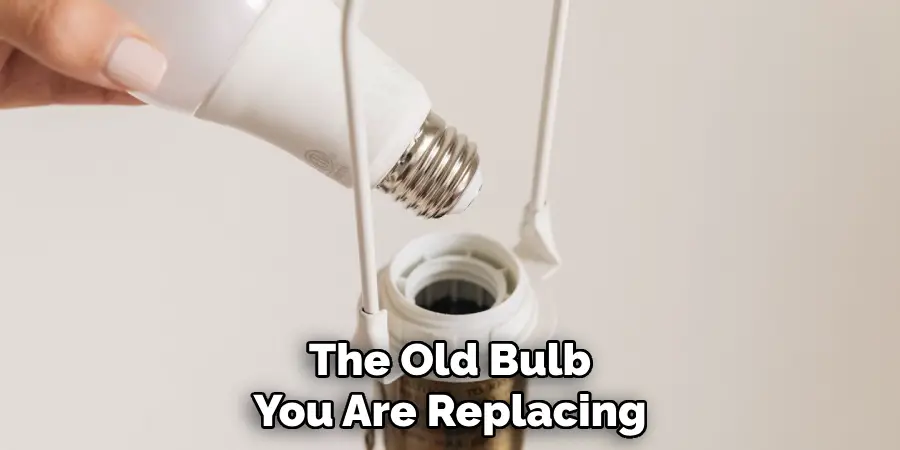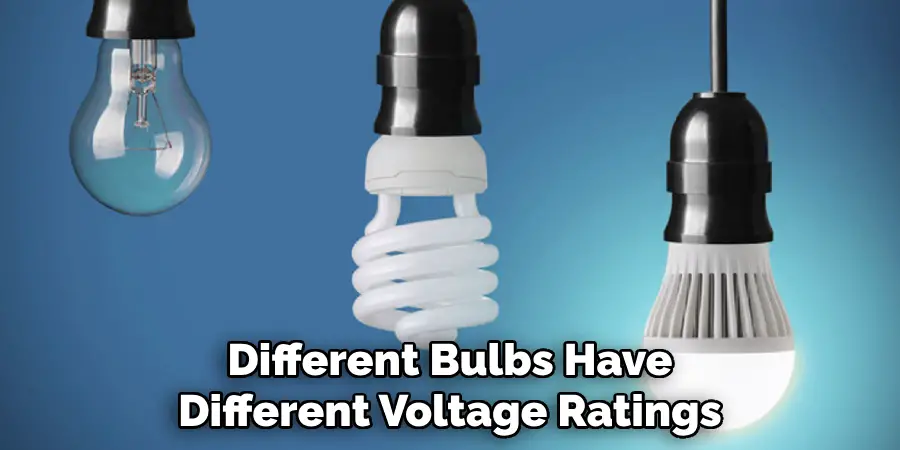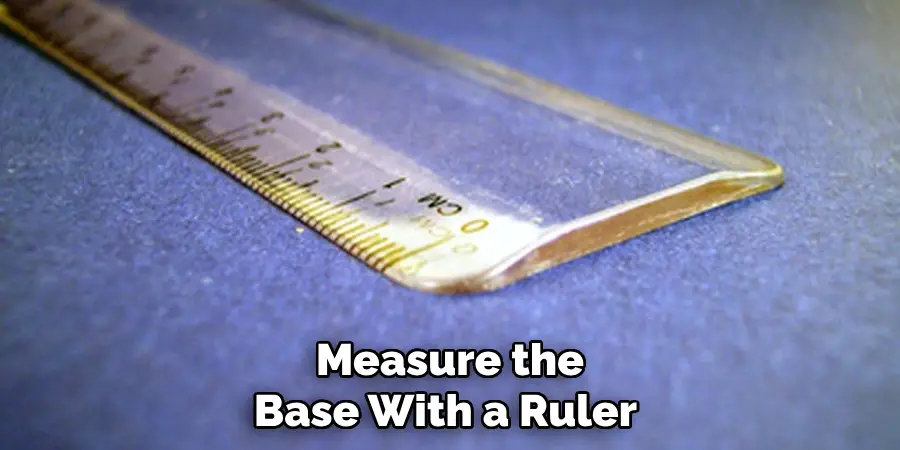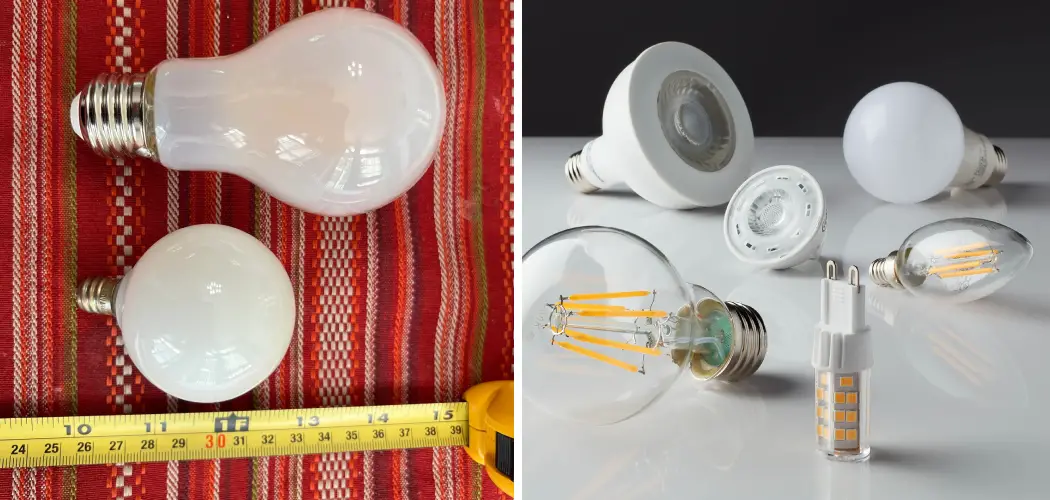Light bulbs are an essential part of our day-to-day life, and understanding the measurement of light bulb bases is crucial to ensure you purchase the right bulb for your fixture. Measuring the base of your light bulb is not rocket science, but you must do it correctly.

Whether buying a replacement bulb for a burned-out one or looking for a new light fixture, knowing how to measure light bulb base is critical. In this blog post, we will look at all aspects of measuring light bulb bases.
Can You Measure the Light Bulb Base?
Light bulbs are a staple in every household, but when it comes to replacing them, it can get confusing. Measuring the base is one of the most crucial aspects of buying a new light bulb.
Luckily, measuring a light bulb base is a straightforward process. You will need to measure the distance across the widest part of the base or the diameter. It’s important to note that light bulbs have different base sizes, so measure your current bulb before purchasing a new one. By doing so, you’ll avoid the frustrating experience of getting the wrong size and ultimately end up with perfectly lit rooms.
Why Should You Measure Light Bulb Base?
When it comes to selecting a light bulb, there are many factors to consider, such as bulb shape, wattage, and color temperature. However, one important aspect that often goes overlooked is the light bulb base.
Measuring the base of your light bulb is crucial to ensure that you select a replacement bulb that fits properly in your fixture. Choosing a bulb with the wrong base size can cause damage to your socket and potentially even start a fire. So, take the extra time to measure your light bulb base and avoid any potential safety hazards.
A Complete Guide on How to Measure Light Bulb Base
Step 1: Determine the Bulb Type
The first step in measuring your light bulb base is to determine the bulb type. Many light bulbs include incandescent, compact fluorescent, and LED. The bulb type is critical because the base style may vary depending on the bulb type. The easiest way to determine the bulb type is to look at the old bulb you are replacing. If the bulb is still in place, the type and base size will usually be indicated on it.

Step 2: Measuring the Base
Once you have determined the bulb type and size, you can measure the base. There are two common measurements for light bulb bases: diameter and pitch. The diameter is the width of the base, while the pitch is the distance between the threads. Keep in mind that different bulbs have different base types.
For example, an Edison screw (E26) has a 26mm diameter base and uses a screw-in thread system, while a candelabra screw (E12) has a 12mm diameter base that is threaded.
Step 3. Mesure the Overall Length
Another critical aspect of measuring your light bulb base is the overall length of your bulb. It is essential to choose the right bulb that is proportional to your fixture. It should fit correctly without any gaps or protruding parts. To measure the overall length of the bulb, hold it against a ruler or tape measure and measure from the bottom of the base to the tip of the bulb.
Step 4. Check the Voltage
When measuring your light bulb base, it is also important to note the voltage rating. Different bulbs have different voltage ratings, and it is essential to ensure you buy a bulb with the correct rating for your fixture. Most bulbs will indicate their voltage on the packaging or at the bottom of the bulb itself.

Step 5. Keep an Eye Out for Special Features
Depending on the type of bulb, there may be additional features that affect your measurement. For instance, some bulbs have a built-in dimmer or timer. Be sure to check for any special features before measuring your light bulb base and ensure they are compatible with your fixture.
Step 6. Determine the Wattage
Most light bulbs also come with different wattage ratings. Wattage determines how much power the bulb consumes and is an important factor when selecting the right bulb for your fixture. Usually, the wattage will be indicated on the packaging or the bulb itself.
Step 7. Buy Your Bulb
Once you have taken note of all these measurements, it’s time to buy your bulb. Check the measurements carefully and ensure they match the old bulb before purchasing a new one. Some bulbs may also come with safety certifications or other special features, so be sure to check these as well.
When buying light bulbs, it’s important to make sure that all of the measurements are correct. Measuring the base size, overall length, voltage rating, wattage, and any special features will help you select the right bulb for your fixture. You can ensure your light bulb is properly fitted and working correctly with the right measurements.
5 Considerations Things When You Need to Measure Light Bulb Base
1. Socket Type
The socket type is the first thing to consider when measuring a light bulb base. Different sockets require different measurements, so it is important to know what type of socket you are dealing with before attempting to measure it. Common socket types include E26, E27, GU10, and MR16.
2. Base Diameter
The next thing to measure is the base diameter of the light bulb. This measurement can be taken with either a ruler or caliper and should be taken from the widest point of the base. It is important to note that some bulbs may have a slightly curved base, making this measurement more difficult to take accurately.
3. Overall Height
The overall height of the light bulb should also be measured to ensure that it will fit into your fixture properly. This measurement should be taken from the top of the base to the bottom of the bulb and can be taken with either a ruler or caliper. It is important to note that some bulbs may have an angled top or bottom, making this measurement more difficult to take accurately.

4. Bulb Shape
The shape of the light bulb should also be considered when measuring its base size, as certain shapes may require different measurements than others. Common bulb shapes include A-shape, globe-shape, and reflector-shape bulbs; each shape requires its own set of measurements for it to fit into a fixture properly.
5. Maximum Wattage
Finally, it is important to consider the maximum wattage rating for your light bulb before purchasing one with an incorrect size base for your fixture. The wattage rating will determine how much power your bulb can safely handle without becoming damaged or overheating; if you purchase a bulb with too high of a wattage rating for your fixture, then it could become damaged or cause other issues due to overheating.
By taking the time to measure and consider all of these factors when purchasing a new light bulb, you can ensure that it will fit perfectly into your fixture and provide you with the lighting results you desire. With this guide in mind, measuring light bulb base sizes should be straightforward!
Benefits of Measure Light Bulb Base
When lighting fixtures, the bulb’s base is often overlooked but critical. Measuring the light bulb base can offer several benefits that help identify compatible fixtures and ensure safety.
One of the significant benefits is that it helps homeowners save money by avoiding costly replacement mistakes. By measuring the bulb base, you can identify the correct size and type, preventing any damage to the bulb and the fixture.
Additionally, identifying the bulb base will ease the process of shopping for bulbs since you know the correct specifications needed. Ultimately, measuring light bulb bases is a seemingly small but essential step in achieving the best illumination while keeping your home and wallet safe.
Some Common Mistakes People Make When Trying to Measure Light Bulb Base
Have you ever found yourself standing in the light bulb aisle, trying to replace a burnt-out bulb, only to realize that you don’t know the size of the base? Measuring the base can be frustrating and time-consuming, but making mistakes in the process can be costly.
One common mistake is assuming all light bulb bases are the same size. This couldn’t be further from the truth! Even small variations in size can mean the difference between a perfectly fitting bulb and one that won’t work. Another mistake is using the wrong measuring tool. Trying to measure the base with a ruler or tape measure can be tricky, as the small size of the base can make it difficult to get an accurate reading.

Using a caliper or another specialized measuring tool is much more effective and will ensure you get the correct base size every time. Next time you find yourself in need of a new bulb, take the time to measure the base properly. It might take a little extra effort, but it will save you time and money in the long run!
Conclusion
Measuring your light bulb base might seem daunting, but it is relatively straightforward once you know the basics. Choosing the right bulb for your fixture is essential to ensure optimal lighting output and long-term usability.
Following the tips outlined in this blog post, you can easily measure your light bulb base and find the perfect bulb for your needs. Remember to take your old bulb to a hardware store if you are unsure and get the help of an expert to make the right choice. Thanks for reading our post about how to measure light bulb base.


